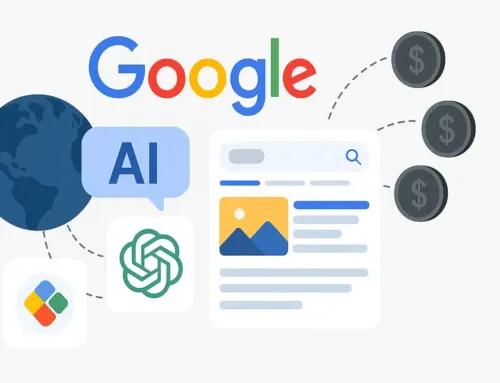How to Find Your Social Media Target Audience

Our last blog discussed “What Is Content Strategy And How It Works For You.” Let’s dig deeper into one of the main points raised: knowing your market.
So How Do You Uncover Your Perfect Social Media Target Audience
Do you ever think about who is paying attention to what you post on social media? With more and more people joining these platforms daily, businesses must focus on their target audience. Shared characteristics like age, job, income level, education, location, and behaviour identify this group of potential customers.
Understanding your social media target audience is like knowing your company’s buyer personas. So, what exactly is a buyer persona? It’s a semi-fictional profile of your ideal customer combining market research with actual data about your existing customers. Having clear buyer personas helps develop a consistent brand voice and create relatable content.
Why is this important? Because speaking the same language as your audience increases the likelihood of interaction, enhances brand loyalty, and, ultimately, influences purchasing decisions. The more specific and detailed your audience profiling, the better you can market your product and decide who to target.
Now that we’ve covered the basics let’s take a closer look at how you can pinpoint your social media target audience.
Identifying Buyer Personas
To create an engaging social media strategy, define or create your buyer personas. If your business already has them, great! You can use the same information for your social media target audience.
For those who still need to define buyer personas, start by analysing your current customer base. Consider their demographic details – job, age, income level. Tools like social media analytics can help, allowing you to track current campaigns and build on existing audience knowledge.
Once you’ve collated the demographic information, go deeper. Ask questions like, “What are my audience’s pain points?” and “What problems does my product or service solve?” You should also take into account their spending power, patterns, and stage of life. All these factors impact how they interact on social media and spend their money.
You might end up with more than one persona, especially if you sell multiple products or services.
Locating Your Audience Online
After getting a clear picture of your audience, the next step is determining where they are most active online. Understanding where your audience hangs out on the internet helps you to decide which social media platforms to prioritise.
Recent data shows that older generations have nearly doubled their Facebook usage over the past four years. Twitter, on the other hand, is popular amongst younger audiences. Twitter users aged between 18 and 29 account for 38% of users, while people between 30 and 49 account for 26%. Instagram, too attracts a younger audience, with 35% of users aged between 25-34 and 30% aged 18-24.
This data can help you decide which platform to focus your efforts on and where to adjust your strategy. For instance, you can adapt if a post works well on one platform but not another. Or, if the people you’re targeting are less interested than another group, you can modify your target audience.
Learning from Competitors
While defining your social media target audience, it’s also helpful to observe your competitors. Analyse their social media presence.
- What tone are they using?
- Who are they appealing to?
- Review the reactions to their posts.
- What social networks are they active on?
- Who are their top followers?
- What is their engagement rate?
- What hashtags do they use?
You can also find keywords related to your business on social media platforms and observe which competitors appear. This exercise can provide valuable insights to build into your strategy.
Talk To Your Customers
Despite the mountain of statistics available, nothing beats a conversation with your existing customers. Customer surveys work well for this. They can help identify your actual customers and their preferred social media networks.
Ask your customers about their content preferences, favourite social media sites, and people they follow. This information can prove invaluable when shaping your social media strategy.
Exploring Facebook Groups
It’s worth exploring relevant Facebook groups if your audience primarily uses Facebook. Facebook groups can provide valuable insights about your audience, especially if you are targeting local communities.
Observe the content they share, the language they use, and their interaction style. You can use these observations to refine your communication strategy and even consider starting your own group to engage with your audience directly.
The magic happens when you use this information to publish engaging content and implement effective marketing strategies. It informs your content strategy, helps focus your efforts on the right platforms, and ultimately allows you to connect better with your audience.
So, roll up your sleeves and dive into finding your target audience. It may take time and effort, but the payoff is worth it. Once you know your target audience, you can draft a content plan that resonates with them and helps create strong brand loyalty.
Need help with your with social media strategy? Feel free to reach out to the team at Scorched Media and talk to us about your digital marketing needs.
FAQs
1. What is a social media target audience?
A social media target audience is a specific group of people who are most likely to engage with your content, products, or services. They share common characteristics like age, interests, and behaviours.
2. How do I identify my social media target audience?
Start by defining buyer personas, analysing your current customer base, and using social media analytics to understand where your audience spends their time online.
3. Why is it important to know my social media target audience?
Understanding your target audience helps create more relevant and engaging content, leading to better engagement, brand loyalty, and higher conversion rates.
4. Can competitors help in identifying my social media target audience?
Yes, analysing your competitors’ social media presence can provide insights into their audience, helping you refine your own target audience and strategy.
5. How can I engage with my social media target audience?
Engage your audience by creating content that resonates with them, interacting through comments and messages, and consistently updating your social media platforms with relevant information.




